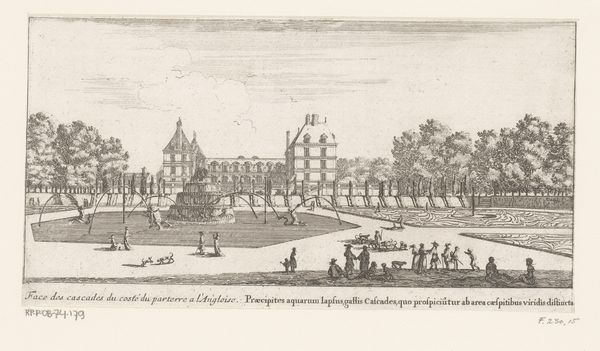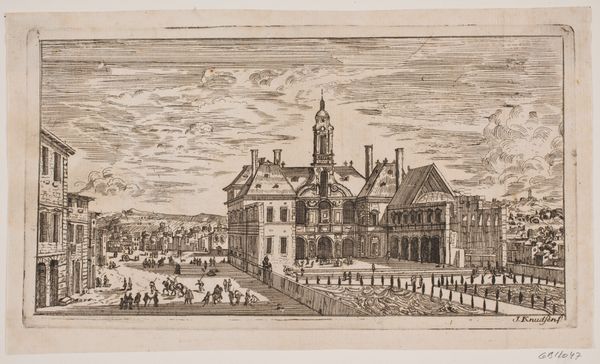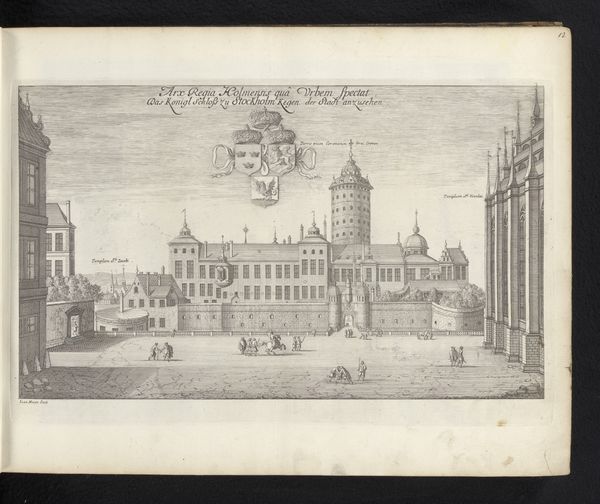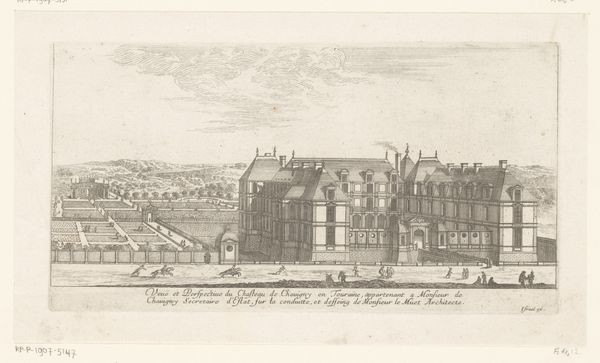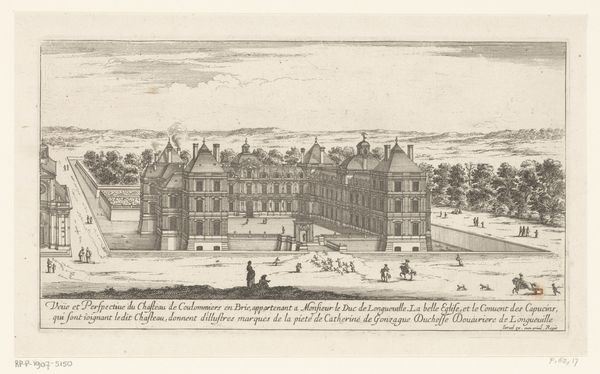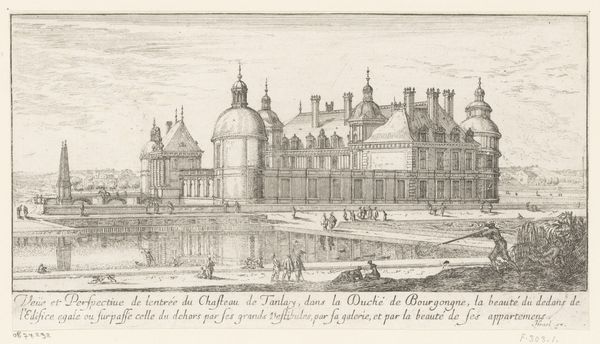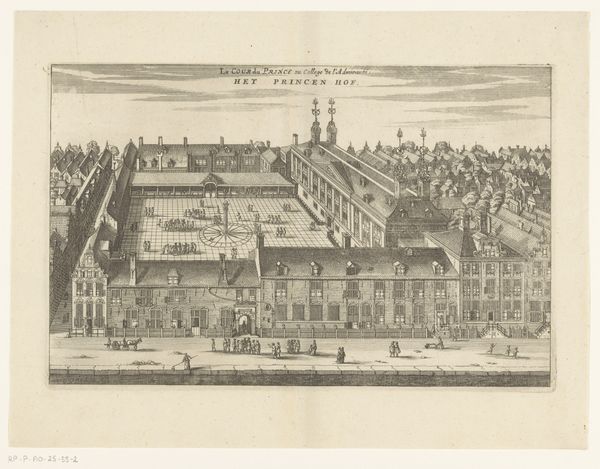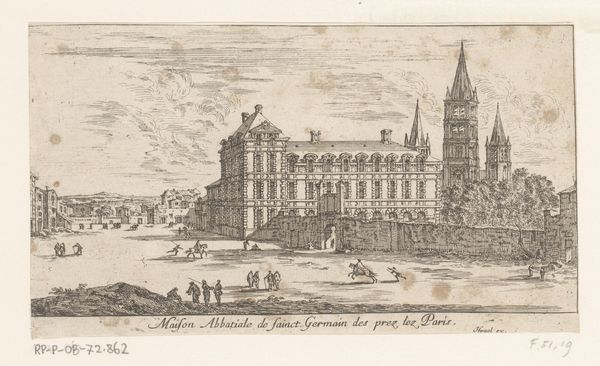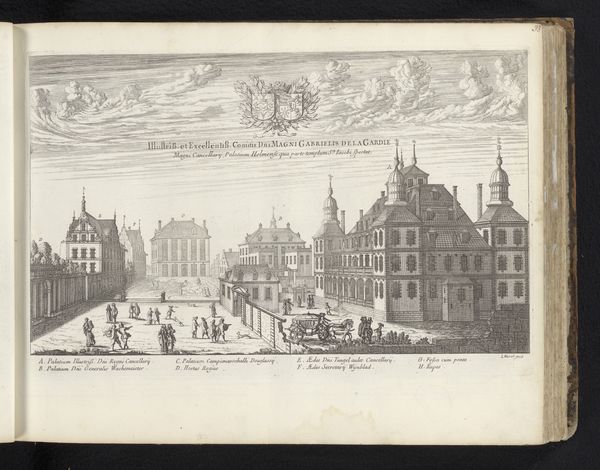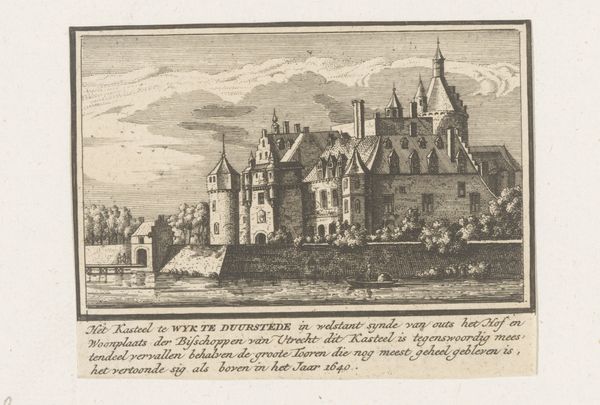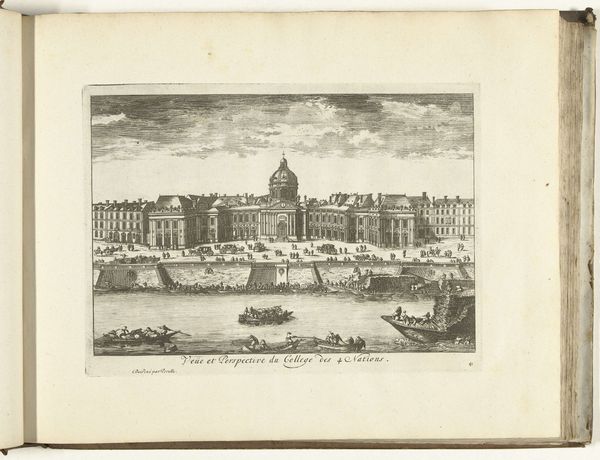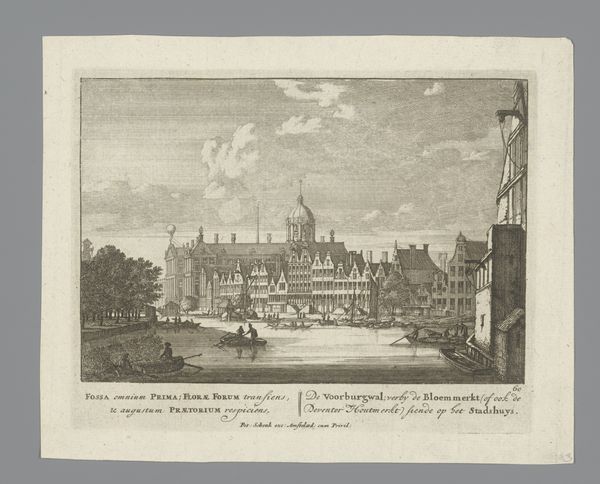
print, engraving, architecture
#
baroque
# print
#
cityscape
#
engraving
#
architecture
Dimensions: height 322 mm, width 406 mm
Copyright: Rijks Museum: Open Domain
Curator: Look at the detail in this print, it's breathtaking. This is Israel Silvestre’s "Gezicht op het klooster van Val-de-Grâce," created in 1661. Editor: Immediately striking. The composition's cool precision somehow gives me a sense of distance. It almost feels staged, artificial. I’m curious about the materiality of the print itself – what sort of paper, inks, and engraving tools would have been used in its production? Curator: Let’s consider the social context: Louis XIV commissioned the reconstruction of the Val-de-Grâce abbey as a testament to divine grace and royal power. This print then acts as a form of visual propaganda, reinforcing the image of the Sun King. How does that sit with your materialist reading? Editor: The engraving process itself would have demanded specialized labor and materials. It represents a particular kind of value system linked to the court, contrasting to other types of production common in that same period. And while you call it visual propaganda, consider what kinds of labor were left OUT of the image? I'm far more interested in those making it than admiring the royalty who purchased it. Curator: Precisely. And what about the positioning of women in the religious order, signified by their distinct dress, compared to their royal patron? The print invites a consideration of these very relationships of power. Editor: This emphasis on control over materials reflects the hierarchies of society as well. Think about it—this perfectly rendered building, meticulously etched onto a page—all meant to portray permanence and grandeur, yet ultimately relies on human hands. It highlights a specific material interaction geared toward maintaining structures of domination. Curator: Silvestre was masterful at capturing these scenes, but viewed through our modern lens, it prompts so many considerations about the construction of power and the stories that get told through art. Editor: I agree, and it reminds us that even what appears to be a simple cityscape print speaks volumes about its socio-economic moment. We can use that moment to investigate the many levels of material investment such "simple" architecture took during its moment and time, who profited from such constructions and if those inequalities continue to have resonance today.
Comments
No comments
Be the first to comment and join the conversation on the ultimate creative platform.
